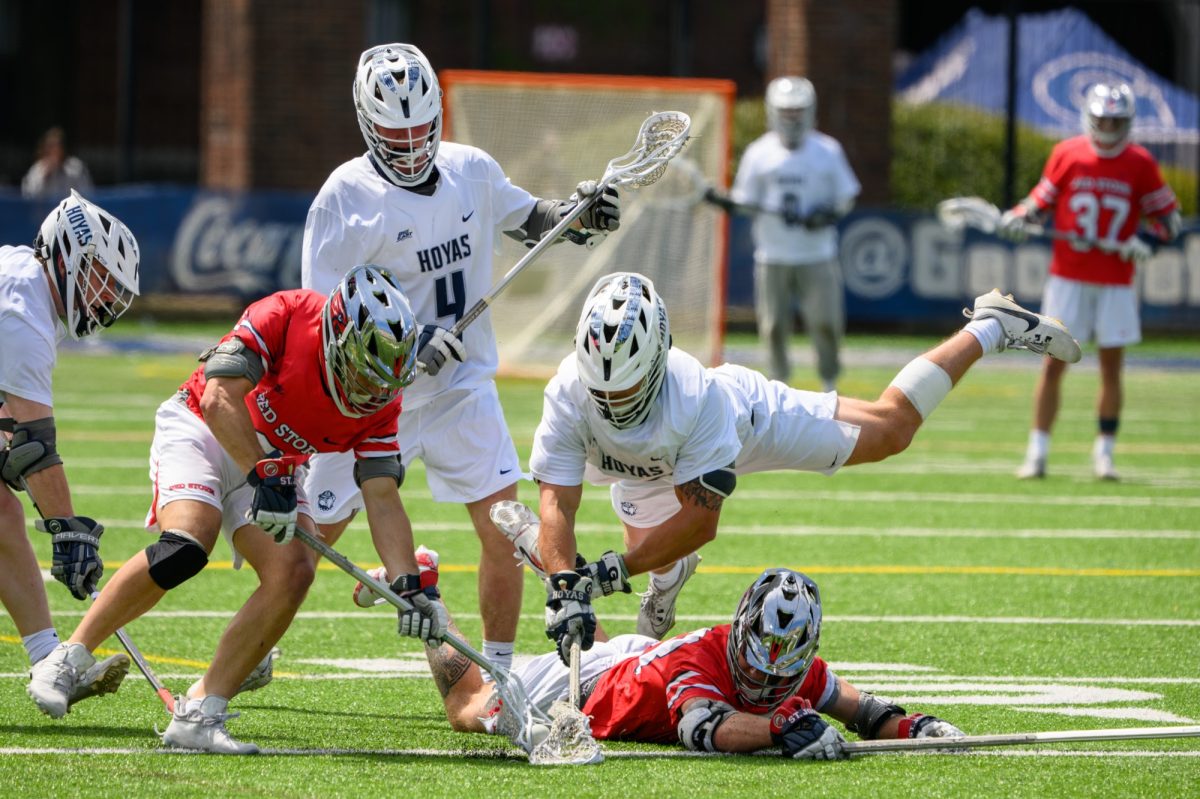My first injury happened just before my sophomore year of high school. I unknowingly strained my quadriceps by taking multiple practice penalty kicks without proper stretching, which rendered me unable to run during tryouts. Unsurprisingly, I subsequently did not make varsity that year. I was put on the JV team and sidelined for almost two months.
That was only the beginning. What followed was a seemingly endless string of injuries: a torn ACL and meniscus in the right knee that spring, a stress fracture in the sacrum the following winter, a re-torn meniscus two months later and finally, a torn MCL, ACL and meniscus in the left knee on Saint Patrick’s Day of my senior year. So much for luck of the Irish.
To put it simply, being injured sucks. You’re benched for at least half a season — if you’re lucky, and when you return, you must work twice as hard to make up for lost time. There’s simply no way around it and you inevitably fall behind. The circumstances leading to an injury are often unpredictable and usually inevitable. My first torn ACL resulted from an awkward fall on the field, and my second from getting my foot stuck in the mud. Some people are lucky and avoid such flukes. I have a friend who never experienced serious setbacks, and she still plays soccer injury-free, excelling in the sport that has caused me so much heartache and physical strain.
Granted, countless numbers of top-class athletes have suffered fates similar to mine and have been able to rebound with considerable success. A Pitchside Report found that two-thirds of the women’s national soccer team experienced some form of serious injury in the past, mostly ACL tears, and each of them has returned and excelled. Regardless of their successful recoveries, I have personally found it extremely difficult to repeatedly return to soccer. It seemed like every time I came back, I was almost immediately back on the bench. I received an injury less than a week after returning from another. It was only upon entering college that I switched to boxing because my knees simply couldn’t take any further abuse from playing soccer.
Some injuries are preventable with proper strength and conditioning, but certain sports encourage aggressive play in which the chances of getting hurt are extremely high. The NFL, for example, has a “100% injury rate.” It is only in recent years that people finally have begun to understand the damage that this type of aggression can cause, as highlighted in the recent movie “Concussion.”
At the same time, an NFL report released on Friday stated that the number of concussions diagnosed in 2015 increased by 32 percent from the previous year. A recent Associated Press survey of 100 NFL players revealed that fewer than half believed that their teams prioritized their safety. However, in a CBS news article, Detroit Lions safety Don Carey acknowledged the conflict of interest between a team’s doctors and trainers: “It’s their job is to make you playable. There’s a lot of pressure on them to keep guys on the field.” The value of a player also factors into the equation. The bigger the paycheck, the better the player is treated and the quicker he is encouraged to return to the game, regardless of whether or not he has fully recovered.
It is not just the professional leagues that are having these problems. They are happening at all levels of play. A CNN article reported that in New York alone, the number of ACL repairs performed on children aged three to 20 more than doubled from 1990 to 2009. The article also pointed out the risks of early specialization in one sport. Junior elite tennis players are 50 percent more likely to suffer an injury than those who play in multiple sports at once, and young adolescent women who specialize in one sport are 1.5 times more likely to report anterior knee pain than those who do not.
So why continue this abuse of athletes’ bodies? It’s often out of necessity, as many athletes feel the need to specialize in one sport to get into competitive colleges or professional programs later on. Their well-being is put on the back burner, leading to endless new and recurring injuries.
It’s a fight to get back into the game after an injury, and for some, that fight is not always successful. It’s a huge problem for college and professional athletes whose livelihoods depend on their bodies working well. But the show must go on, and those unable to keep up are left behind. Unfair? Yes. Avoidable? Unfortunately not. It would be ideal if we could find a solution to the problem of injuries, but they are simply part and parcel of playing sports, and they befall some athletes disproportionately more than others. It is important that such circumstances be acknowledged, treated and respected because these setbacks make the accomplishments of athletes who have faced them all the more impressive — and if we ignore them, we only add insult to injury.
 Sinead Schenk is a junior in the College. A Level Playing Field appears every other Tuesday.
Sinead Schenk is a junior in the College. A Level Playing Field appears every other Tuesday.














